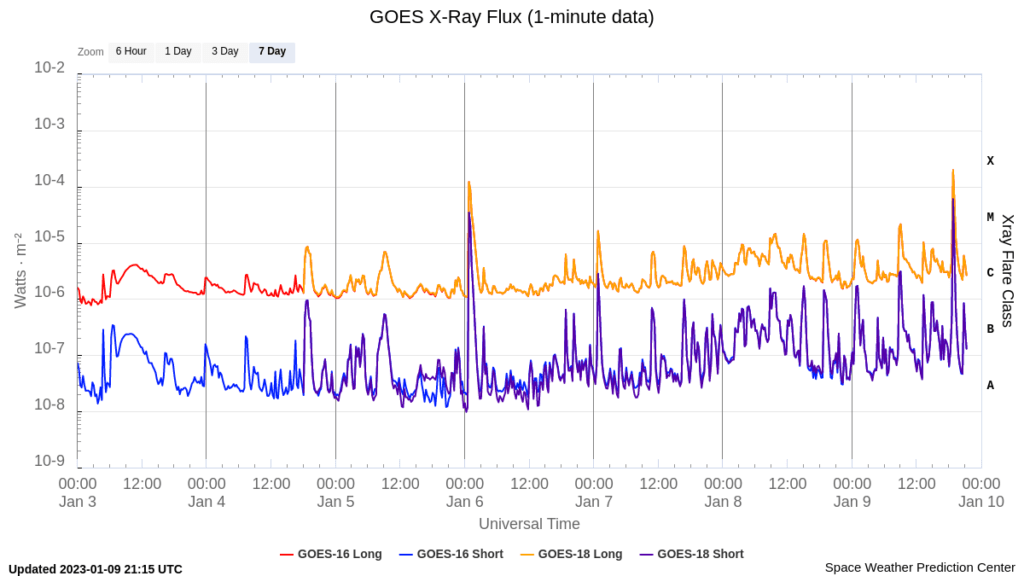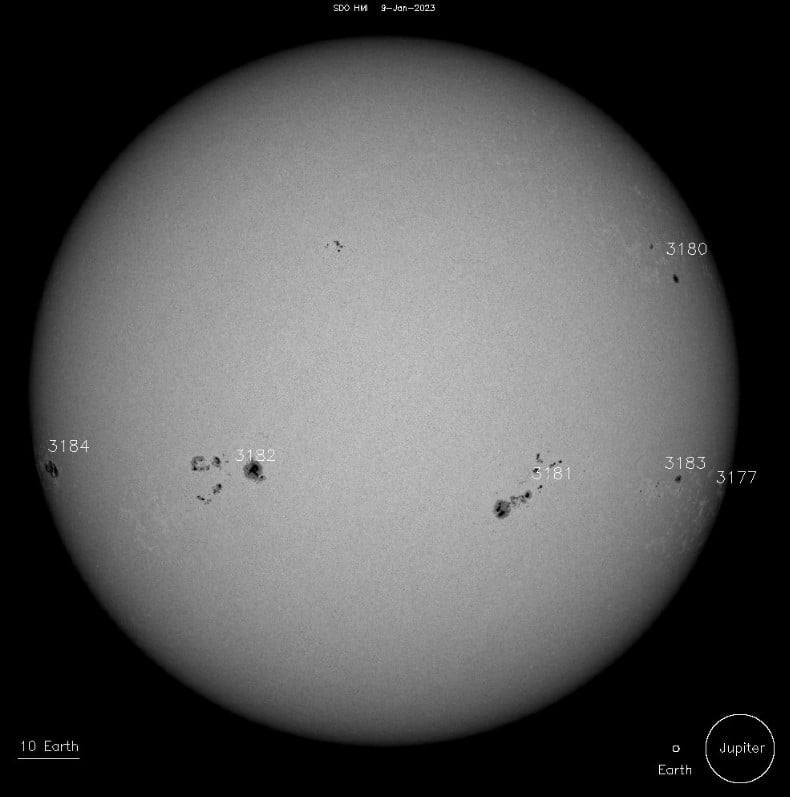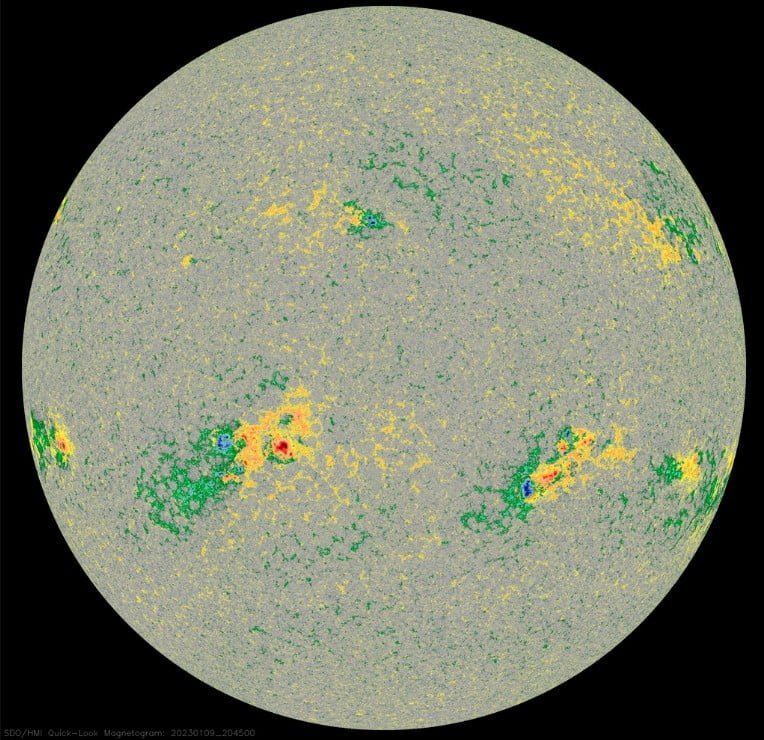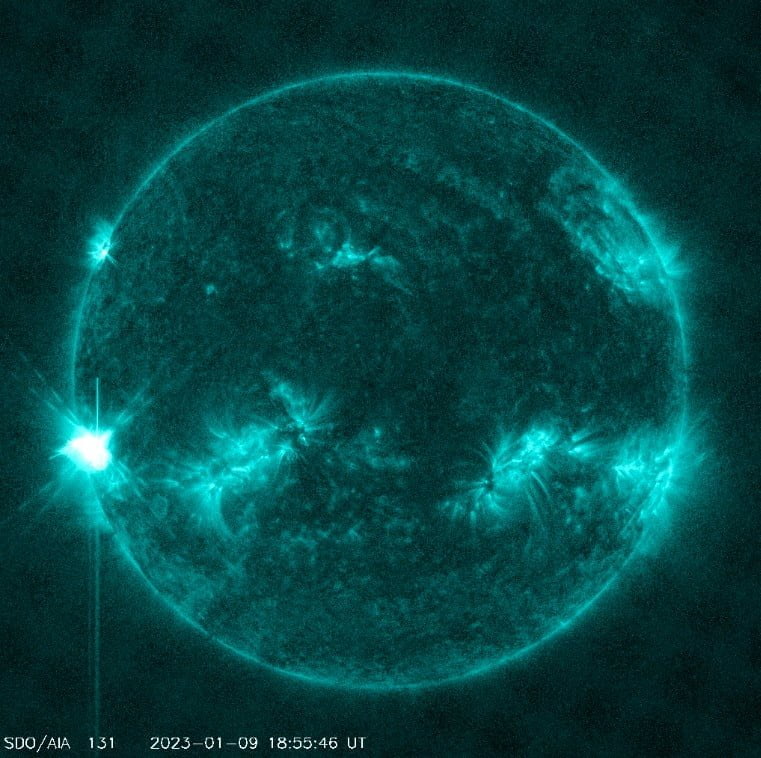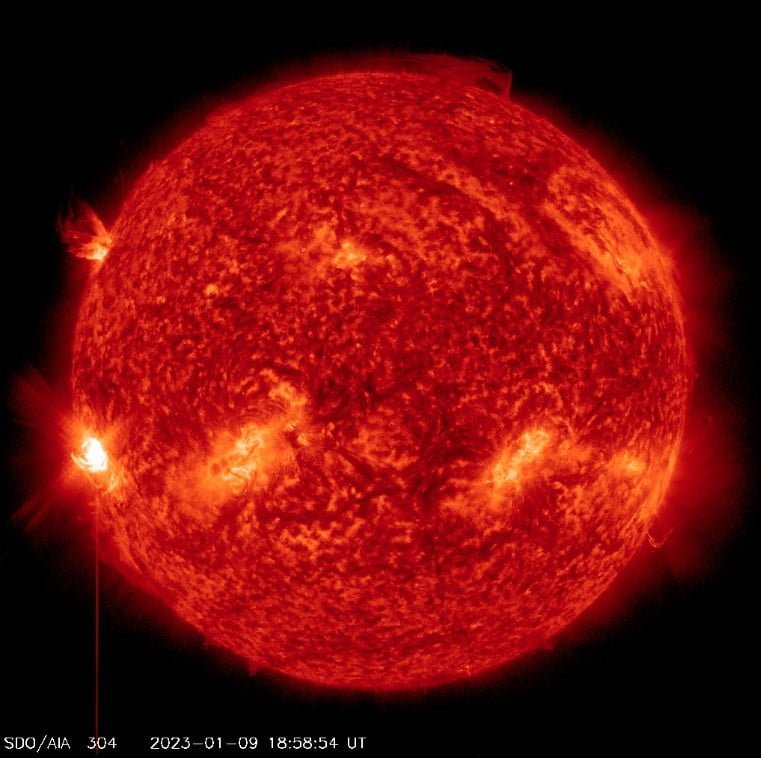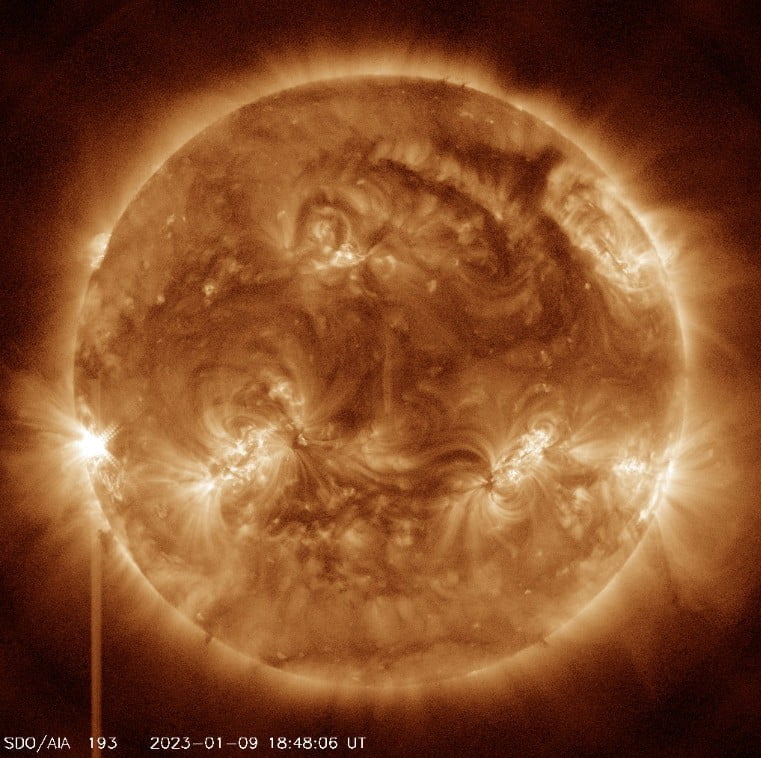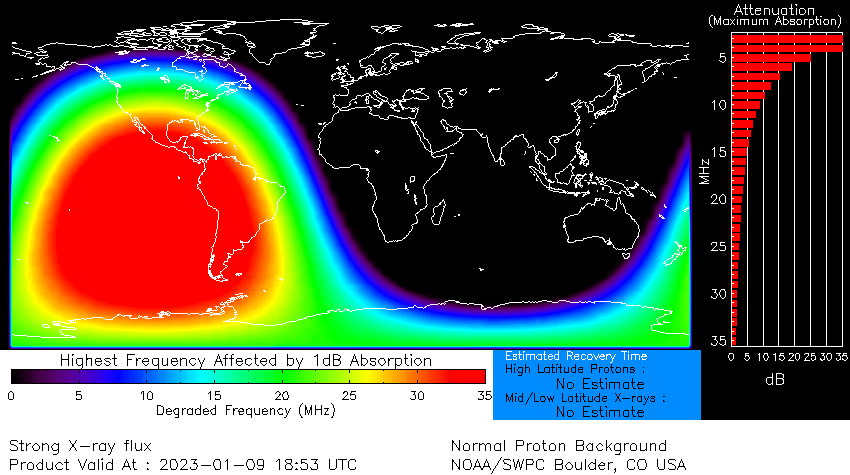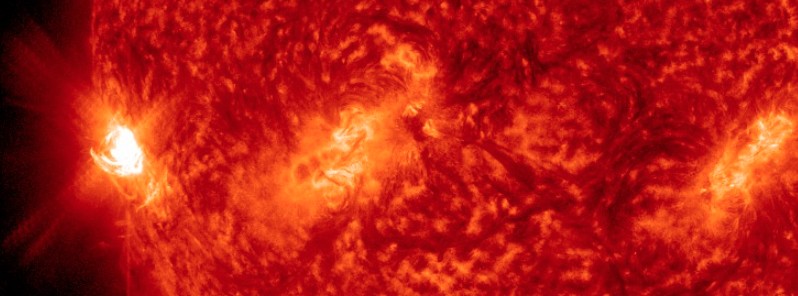A major solar flare measuring X1.9 erupted from the newly-numbered Active Region 3184 on January 9, 2023. The event started at 18:37, peaked at 18:50, and ended at 18:57 UTC.
- This is the second strongest solar flare of Solar Cycle 25, following X2.2 from Region 2992 at 03:57 UTC on April 20, 2022
- This is also the second X-class solar flare over the past 3 days after X1.2 at 00:57 UTC on January 6
- There is now a 35% chance for additional R3 – R5 (Strong to Extreme) Radio Blackouts, up from 30% earlier in the day
There were no radio signatures associated with today’s X-class flare that would suggest a coronal mass ejection (CME) was produced. Even if it was, the location of this region doesn’t favor Earth-directed CMEs. This will change in the days ahead as the region rotates toward the center of the solar disk.
Shortwave radio blackouts affected the southern United States, Central America, most of South America, large parts of the Pacific Ocean, and parts of Antarctica.
A total of 8 M-class solar flares erupted since X1.2 at 00:57 UTC on January 6, most of them from newly-numbered AR 3184 that rotated onto the southeast limb on January 8 and produced a total of 4 flares during the day — M1.2, two M1.4, and M1.0, followed by M1.1 and M2.1 on January 9.
Another region to watch these days is Region 3182. This sunspot developed a beta-gamma-delta magnetic configuration on January 8 and also poses a threat for strong to extreme X-class solar flares.
The region is currently in a geoeffective position, so any coronal mass ejection produced by it would most likely be Earth-directed. This threat will last for a couple of days as the region rotates away from the center of the disk.
